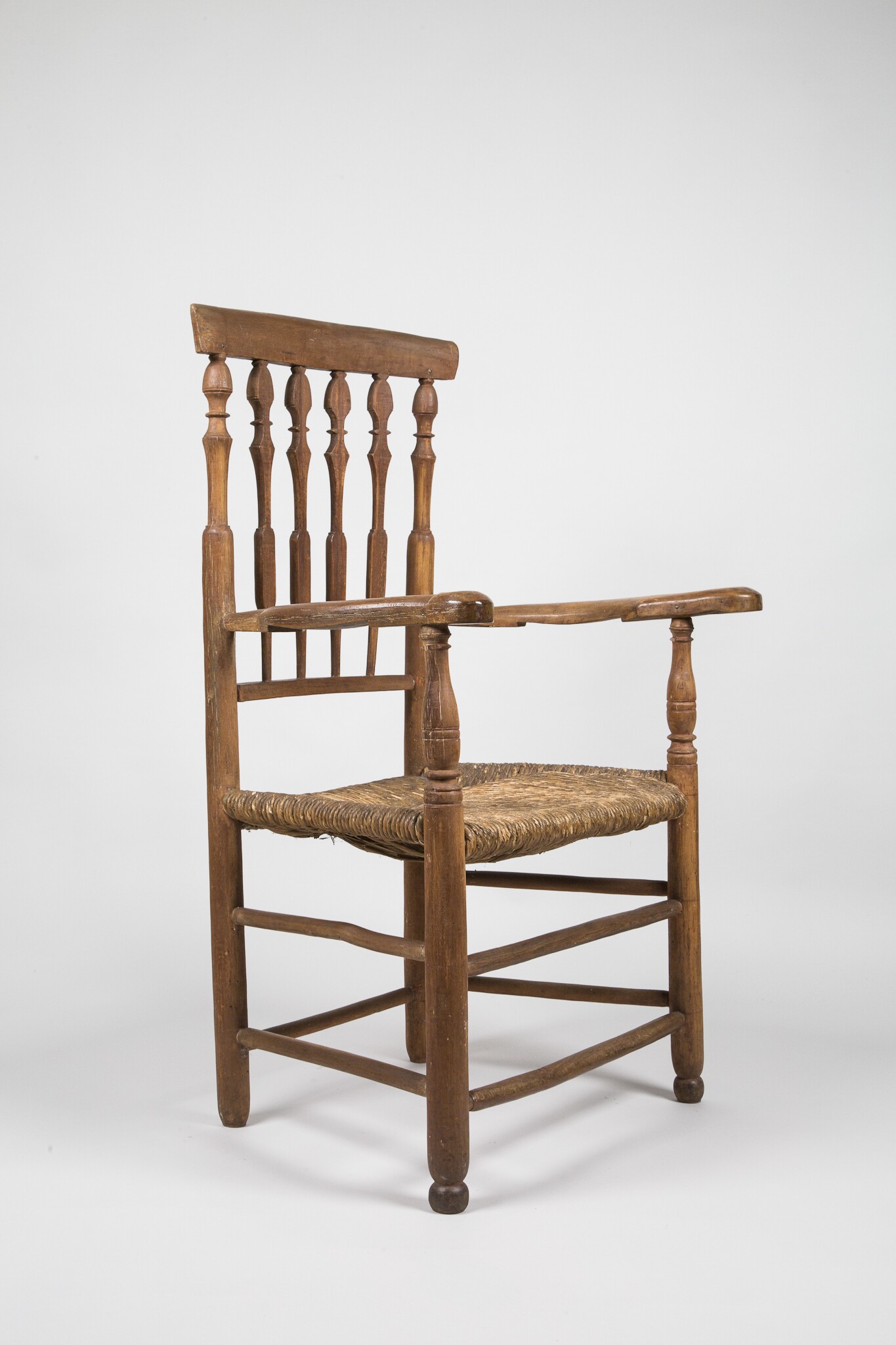Das Holz des Vier-Pfostenstuhls besitzt einen bronzefarbenen Ton. Er ist ungefasst und mit Armlehnen versehen. Die Armlehnen schwingen nach außen und enden in einer liegenden Volute. Die vorderen Pfosten sind über der Sitzfläche und an den Beinenden beschnitzt. Die hinteren Holme tragen ein Querbrett und sind im unteren Bereich verstrebt. Dazwischen sind längliche Baluster gesetzt worden, die zur Rückenfläche hin eingeebnet sind. Die Beine sind jeweils durch zwei Streben miteinander verbunden.
BS
en

